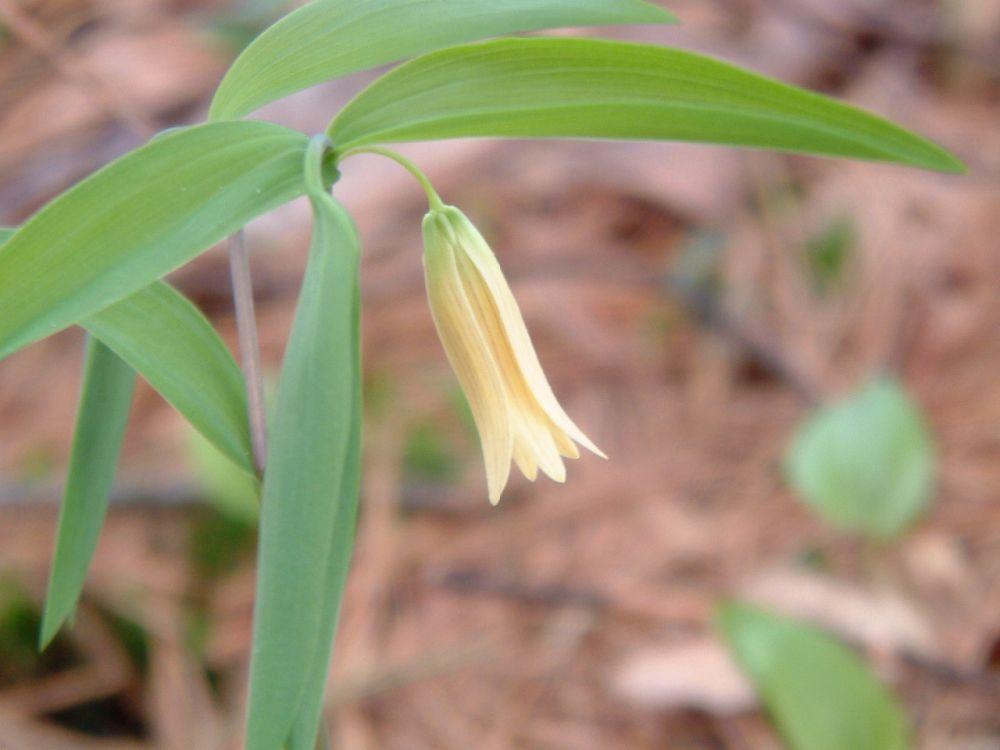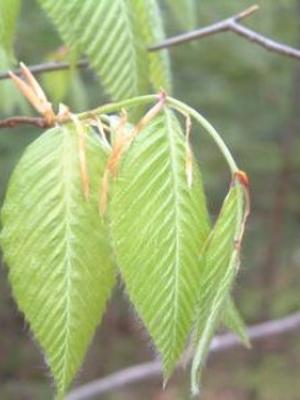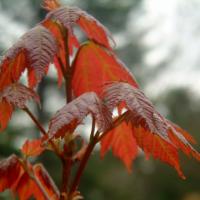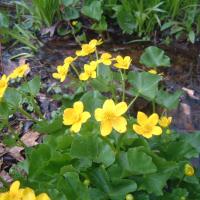Ephemeral leaves and flowers reward those who look closely
- Tags:
- Recreation

Bellwort, also called "Wild Oats" is a very common NH early wildflower. Photo Dave Anderson
Tree buds burst into tiny flowers. Gauzy maple and oak stamens cascade from the twiggy tree canopy. Miniature, tender leaves unfurl, trembling like emerging butterflies, and seem too frail to aspire to shade a forest floor.

The short, unsung “other foliage season” is here.
Don’t blink - you’ll miss it!
For a few heartbreakingly short days, hours it seems, New Hampshire hills are veiled in soft pastels: light yellow, lavender, pinks and pale green. The spring “leaf-out” season arrives annually on the heels of mud season, just as female blackflies begin to bite. Perhaps this time should become a new tourist season? We might give it some quaint name - “Pollen time” or “The neck welt days” to make the most of it.

I recommend taking a walk during cool early morning hours, before clouds of hungry blackflies descend as the day warms. Look along roadside stone walls in sandy, wet culverts. Get really close to best admire the elegant details of flowers, fern fiddleheads and tree leaves. The spring-green landscape swells like a symphony with each passing day.
A few of the more common flower species include edible purple-and-white, dog-toothed violets often found on lawns amid dandelions. In the woods, look for pink-striped, white flowers aptly named “spring beauties.” These members of the Purslane family grow on rich, moist hardwood sites under white ash and sugar maple. By May, Canada mayflower or wild lily-of-the-valley forms a carpet even in shade while growing in acidic soil beneath conifers like pine, spruce and fir.
Other wildflowers tolerant of low pH soils include starflower, pink lady slippers and blue-bead lilies. Stone walls and damp field edges are preferred by the red-and-green striped spadix of Jack-in-the-pulpit. Open, sunny woodlands feature white trillium and red trillium, also called “wake Robin.” Red trillium is also called “stinking Benjamin” because its rancid scent is designed to mimic rotting meat to attract specific carrion flies as pollinators. A frail woodland beauty is “bellwort” or “wild oats,” which features hanging lemon-yellow blossoms.

Near wetlands, watch for bright neon yellow “marsh marigold” with waxy, dark green foliage growing in full sun even in standing water at wetland edges.
Even roadside ditches and culverts are good places to seek emerging wildflowers. One very early, muscular spring wildflower is “Coltsfoot,” which favors hot, sunny roadside ditches choked with silt and winter road sand. The shape of its leaves (which emerge later) gives coltsfoot its common name.
Tree flowers seem modest and understated. Tender green beech, birch, sugar maple and ash leaves, and magenta red oak and red maple leaves flutter above the remains of the waxy covers that encased the buds since late last summer. Miniature bud scales litter the forest floor just like their spent, fallen leaves will next autumn.
The poet Robert Frost described the spring wildflower season in his poem, “Nothing Gold Can Stay”:
"Nature's first green is gold, Her hardest hue to hold.
Her early leaf's a flower; but only so an hour..."
